Power of Personalization
There’s no denying that today, it’s all about the individual. We want everything to be made for us or with us in mind. From the rise in popularity of monogrammed necklaces to custom drink orders, we want things to be done the way we like them. Technology has made personalization easier. Starbucks can send individualized offers based on the drinks you ordered in the past. Siri will call you by your name. Spotify creates playlists of songs, handpicked for you. 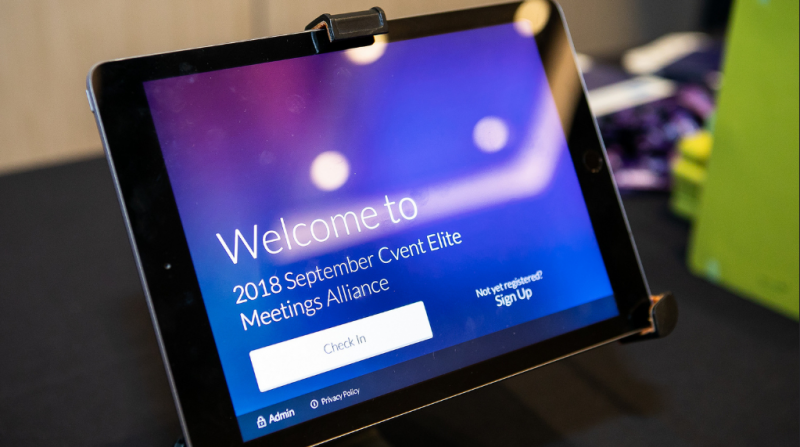
What is Personalization?
It could be as simple as an email that has your name the subject line. It could be as complicated as a hotel room filled with your favorite flowers, favorite foods, note with your name on it, and your favorite music playing. While each has a different level of difficulty, they both utilize the human desire to be recognized as an individual. Of course, that’s not the only reason personalization is important. Personalization, with the help of technology, creates shortcuts. Why do more, when you can do less? Why remember more when you don’t need to? When you get a reminder to order more contacts, with your order, created based on the last order made, attached for review, it means you no longer have to remember that your running low and you don’t need to remember your prescription. It opens up your mind to think about other things. Personalization is a way to feel completely individual and spend less time doing things. Automation has allowed this kind of personalization to flourish.
Why Personalize Events?
Because when it comes down to it, it’s all about the experience. And not just the overall experience, but each attendee’s experience. Events shouldn’t be created with the group average in mind, but with each individual. People are different. They learn differently, they respond differently, and they think differently. Events should be about creating experiences attendees won’t forget, and the most memorable events are those that are tailor-made. Instead of delivering a generic event for 2,000 unique attendees, you can put data to work to create 2,000 powerful personalized experiences in the context of one event – and improve on that personalization year over year. 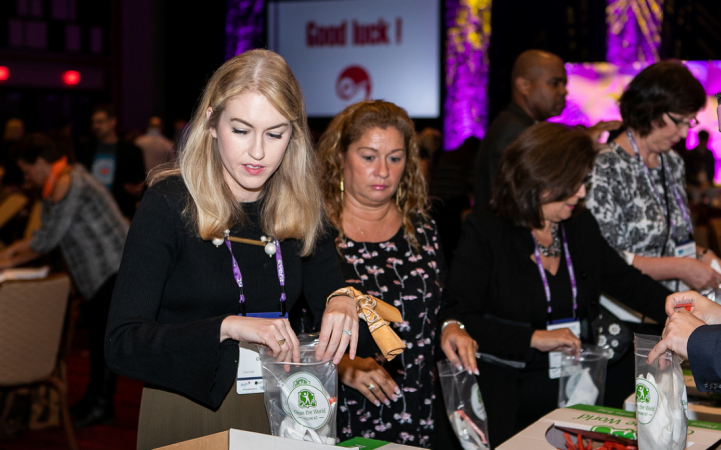
How Do You Personalize Events?
From digital personalization to individualizing experiences onsite, we’ll show you how to take your events to the next level. It all starts with data and automation. Automation isn’t just about doing a repetitive task faster, it’s about reaching and persuading attendees in more relevant ways. When you automate, you’re in a better position to uncover attendee insights to optimize and improve your event. Data gives you the insights you need to be able to personalize your events. There are endless ways to make an event and experience feel more personal.
Registration Forms Attendees Want to Fill Out
The registration form, after a basic landing page form fills to get more event info, is the first place you’ll collect attendee info. Registration forms can be clunky, cumbersome, and long. But they’re only that way because planners want to utilize the interaction for all it’s worth. If set up the right way, the form you create could be a powerful step towards personalization and begin to get attendees excited about the event.
Brand It
A basic, black and white form with no imagery doesn’t create much excitement. Incorporate subtle (or aggressive) branding to let attendees know whose event they’re registering for. Make use of the event and company logo and add in some color. Match company font to create a consistent look and feel.
Ask for Just Enough
Everyone is wary of sharing their data. Don’t ask for information you don’t need. If you ask for more information, let attendees know how that information will be used. You can always ask for more information in follow up email marketing campaigns. This is the foot in the door moment – the individual wants to go to the event and the only thing stopping them while they’re filling out the registration form is it asking questions they don’t want to answer, don’t have time to answer, or can’t answer without going elsewhere for information.
Keep it Short
The worst thing you could do is create a long form that takes an hour to fill out. This will lead to a high registration abandon rate. It shouldn’t take more than five to ten minutes to register for an event – depending on the complexity of the event. If you can get someone through a registration form in less than two minutes, they won’t have time to question if they really want to attend the event.
Make it Fun
Phrase things in a fun way, use color, use images, whatever is possible with the registration platform you’ve chosen to use. Take every opportunity to make the registration process more enjoyable. Your event starts before they register. The experience is a culmination of every moment leading up to the event, the event itself, and post-event. Every piece of collateral they see, how the website looks and functions, if the registration form is complicated, impact the total experience they have. Make the registration form a positive part of the experience.
Generate Buzz
Add an option to share the event on social after they register. This will get them excited, create more excitement, and make them feel more tied to the event. This will also entice people they know to attend and increase registrations. When they share the event on social media, it gives you more insight into the likes and dislikes of your attendees – depending on if their accounts are public or private. Check out these event marketing tips!

Emails That Won’t Cause an Unsubscribe
Open rates, click-through, unsubscribes – oh my! There are so many different pieces of data to pay attention to when using email marketing. The one that can cause the most harm? Unsubscribes. If you lose your audience, you miss out on the opportunity to personalize and interact. Emails are one of the number one ways to communicate with attendees. Don't miss out on the opportunity to gather key information about attendees. Information is the key to personalization.
Frequency
This is the big one. If you send ten emails a day to the same contact list about the same things, you’re asking for an unsubscribe. A good rule of thumb is to think about how often you would want to receive an email from the same organization. A good cadence is to send an invitation, send a reminder if they haven’t registered, and send a second reminder if they still haven’t registered. These emails should be spaced out. For those that did register, an email once a week updating them about event details or getting them excited about the event shouldn’t be a cause for an unsubscribe. The closer the event is the more reminder and information update emails you can send.
Length
Long emails don’t get read. Your emails should be easy to read and brief. If they aren’t, your attendees might miss a big piece of information that’s buried in the long email. Keep your emails to the point and use as little text as possible. The main purpose of the email should be to drive the reader to a website or a landing page that has additional information.
Errors
Proofread! Have some else proofread! Spelling and grammatical errors make you look less credible and affect your brand. When you look at something for a long period of time, it’s easy not to see that you used the wrong “your” or missed a period. Find someone who hasn’t seen the email to take a look. This will give you the chance to fix basic errors and see if there are major layout errors on different computers and phones.
Design
Let your event and company brand shine. Your emails are an extension of your organization and email marketing tools make it easy to design emails that align with your company brand. A logo adds credibility to your email and will let attendees know you’re not a random spammer. User personalization – have their names in the greeting or the subject line.
Subject Lines
Don’t use clickbait. You know what I’m talking about. Subject lines that have a title that may or may not relate to the information in the email but make it almost impossible not to click. Who wouldn’t open an email with the subject line – You won’t believe how cute this puppy is? Yes, you do want your subject line to grab your attention, but it MUST align with the content. A great way to increase opens is to personalize the subject line and use the attendee's name. Want More? 5 Email Marketing Tips for Events
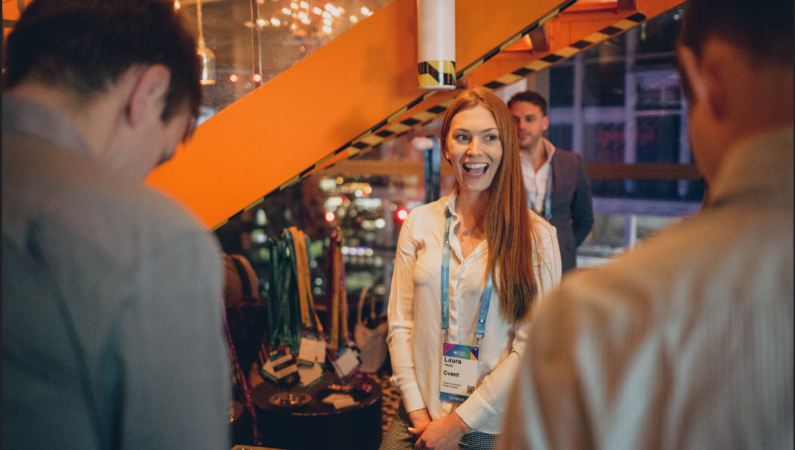
Use Data at Registration to Improve Your Events
You’ve been sourcing information from the start. Up to this point, you might’ve sent targeted emails based on session interest and occupation, you’ve sent emails that use their name in the greeting, and it’s time to use the information you’ve gathered. You don’t want to bother attendees with unnecessary data gathering, so when you get information, use it! Personalize that experience. Plan from the start what items will need more information to be personalized, which will ensure you only get info you need and can explain how it will be used to those who have questions.
The Information You Might Have to Work With
- Name
- Company
- Position
- Length of time attending
- Sessions attending
- Dietary preferences
- Hotel
What Can You Do with It?
- Keep at the email marketing. Now that they’re almost onsite, send them an email to build excitement that pulls in the first session or event they’ll be attending.
- Answer questions as quickly as you can – make sure if attendees are uncertain about basic event details that you respond to them efficiently.
- Start check-in off right. An uncrowded, easy registration will get the event off on the right foot. Using self-check-in kiosks will give attendees control and allow them to make sure their badge and information are correct. You don’t want them to go to find their badge and discover that it has their name misspelled.
- If you have welcome gifts or swag bags, have them at the ready and add their name to the item.
- If your event is held at a hotel, there’s a lot you can do to prepare for their welcome. Have gifts or small treats in their room before they arrive with a short welcome note with their name.
Get creative. There’s a lot you can do with the information you have. Personalization is about the little things, taking the data you have and automating processes to make attendees feel like individuals. Whether your personalization only goes as far as adding a name to an email subject line or is a completely individual experience for attendees, it makes a difference. Read more! How to Gather Key Data Onsite

Making Attendees Part of the Event
Personalization has many different definitions. When it comes to events, personalization can refer to obvious forms of personalization like using an attendees name in an email greeting or a personalized swag bag. But it's also about giving attendees all the information they need and cutting out what they don't. And, it's about engagement. Creating an experience that's tailored to attendees and gives them the opportunity to engage is the power of personalization.
During the Session
In the session, it’s all about the mobile event app. Attendees don’t want to sit and listen to a speaker for an hour. They want to engage. They're going to use their phone regardless. You might as well use it as a powerful tool for personalization.
In-App Questions
Attendees can ask questions on their phones. Some apps allow them to vote for questions other attendees submitted so that the speaker spends time on what the group wants to hear. The Q&A section used to look like one person raising their hand, being picked at random, then taking up the entire Q&A portion of the session with questions or their own thoughts. Question submission takes away the opportunity for these sessions to be hijacked by overenthusiastic attendees.
Feedback
Using surveys to gauge session satisfaction is huge. It allows you to give attendees more of what they want and get rid of things that aren’t working. It also shows them that their thoughts are valued.
Content
Putting presentations and additional content in the mobile event app gives attendees the power. They can save what they want to review later or flip through during the session and take notes. It enables them to make the experience more personal.
During the Event
There are opportunities at every stage of the event to engage attendees and give them a personal experience. Technology makes it easy.
Event Schedule
A mobile event app will allow attendees to pick the sessions they want to attend and create a personalized schedule. This schedule cuts out the information they don’t need to see to give them a detailed view of what matters to them.
Push Notifications
Notifications can seem like a personal message, just for you, to tell you where to go next or what you should check out. Sending push notifications about events that attendees may not have signed up for, but that fit with the other sessions they’re interested in or their demographics show them an experience all about them.
Social Sharing
Create unique moments in the event and make them easy to share. A great hashtag or Snapchat filter will link attendees to your event, and give them the chance to make the event their own. Social sharing within the mobile event app gives them a chance to package their experience in thoughts or pictures and create a personal story.
Keep Engagement High
The Power of Personalization is that, with the help of event management technology, you can create individual experiences for your attendees that make them feel like the event is all about them. With every small touch of personalization, attendees respond more and enjoy more. Want more? Level Up Your Attendee Engagement
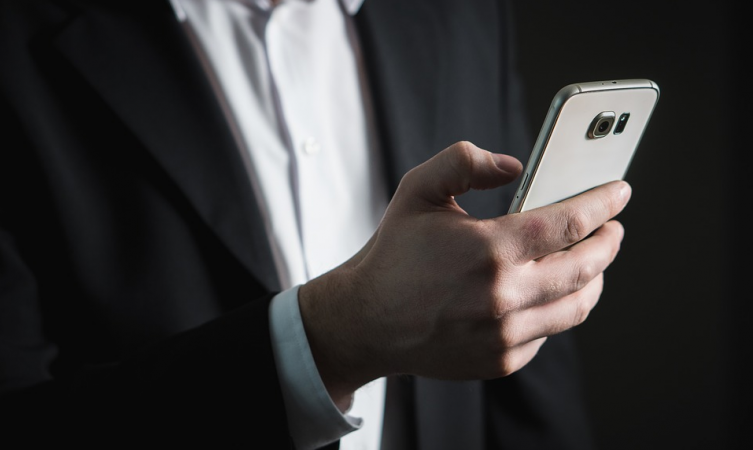
What to Say to Attendees After Your Event
Your event is over. But it isn’t really. Attendees might not be onsite attending sessions and networking, but the event isn’t ever truly over. Post-event is a key time to gather information and make a final, lasting impression. So how do you personalize the last communication you have with your attendees and what data do you need to make sure you collect? It all comes down to a personalized email and post-event survey.
Make it About Memories
In your final emails and social posts, help attendees remember what an amazing time they had at your event. Compiling images that were shared on social or taken at the event in your emails is a great way to tap into nostalgia. Even better? A short video montage. Pull a few highlights from key speakers and really capture what it was like to be at the event.
But Also About Improvement
Now that you’ve tugged at their heartstrings, gather the information you need. The only way to improve your event is to gather real feedback. And we all know, feedback is more accurate when it's collected as close to the close of the event as possible. Weeks after, attendees aren’t going to remember what they loved (or didn’t love). As soon as you can, send out that post-event survey. Emphasize that this information will be reviewed and used to make the next event of yours they attend the best one yet.
Information You’ll Gather
At this point, it’s all about future personalization. Attendees will notice if you listen to their comments the next year. Especially if you changed up something that they didn’t enjoy. Use this time to gather that information and pull together what attendees loved and didn’t love so that you can improve in the future. Most of this information will come from a post-event survey, but you can also gather a lot of information from the attendee tracking and session tracking data you gathered onsite.
Where Does that Info Come From?
When reviewing the effectiveness of your event, you’ll look at a few sources.
- Data and Analytics
- Mobile Event Apps
- Lead Tracking
- Social Media
- Session Tracking
- Survey Results
Listen to What Your Attendees Are Saying
Event management technology is changing the game in terms of personalization and improvement. The tools used onsite provide incredible insights after the event that you can use to adapt. With more data than ever, personalization is even easier. Listen to what your attendees are telling you, and what their data is showing you, to create an even better event in the future. Want to know more about how to get more attendees to participate in surveys? Read 34 Ways to Increase Customer Survey Response Rates.
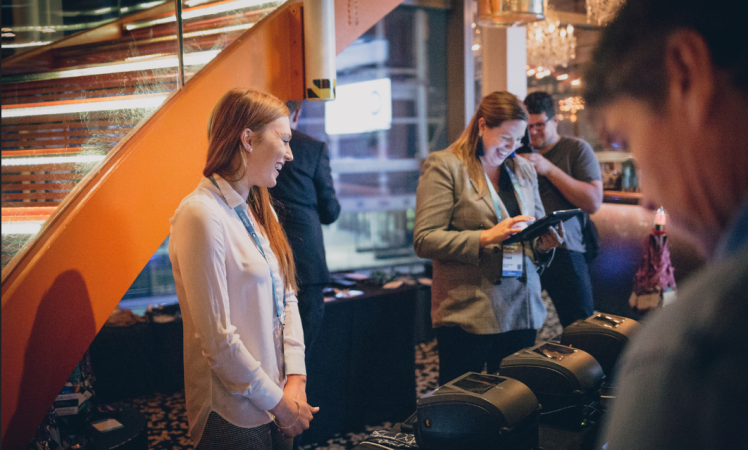
Using Event Data to Personalize Future Events
Your event is over. Hooray! You did it! But it's not the end. You’re probably tired and working hard to close out the event, but there’s one more big thing that you need to do. Throughout the event, you gathered tons and tons of data. That data is just sitting out there, ready to be analyzed, and used to make better events.
The Data You Have
With all of your event management technology in place, there’s no end to the amount of information you have following the event. From attendee information to exhibitor insights, there’s a lot to work with. Below is just a little of the information you can analyze.
- Registration Rates
- Email Open Rates
- Website Metrics
- Attendee Engagement
- Leads
- Quality of Leads
- Ratings and Feedback
- Social Media Interaction and Engagement
- Social Media Metrics
- Survey Responses
- Session Metrics
- App Adoption Rate
- Ad interaction in App
- Route of Attendees
- Booth Visits and Duration
- General Metrics and Analytics
What Data to Look at Right After the Event
The last thing you want to do is sift through mounds of data. But, it’s the only way to improve. Your event is freshest in your mind right after it happens. If you wait too long to review feedback, you won’t remember as much. You don’t need to dig deep into every single piece of data after the event. Take it bit by bit. Most of it you already looked through during the event to make adjustments on site. The biggest piece of information you’ll need to review is the Post-Event Survey. Those results will give you a clear understanding of how successful your attendees thought that your event was.
Data to Look at Later
Just because you can get away with not reviewing all of the data immediately, doesn’t mean you should never review it. Tracking the attendee journey is invaluable. When you know exactly where your attendees went and what they did, you can recognize patterns. Their movements and activity might show you that the layout of your trade show wasn’t conducive to the number of people you had at the event. You should dig into all of the information you received, but there is such a thing as analysis paralysis. Use your event goals to shape how much time you spend on different pieces of information.
Implementing Changes Based on Data
The event is barely over, but it’s time to start planning for the next one. Whether it’s starting the planning for the next annual event or a completely different one, use the insights you gained to improve. Were there topics that didn’t have high attendance? Rework them or get rid of them. By using the data to change up event layout and address attendee needs, you’ll get higher rates of satisfaction at your next event. And, attendees remember. If you make a big change to the event setup, let them know. Emphasize that there’s been a big change in marketing to show them that you’re listening and improving.
Conclusion
Events take time and attention to plan. Event success isn’t a mystery. When you set clear goals and work towards them, using actionable data and insights to adapt, you can increase event ROI. Make the most of the information you have and keep improving. Personalization can take your event to the next level. More than that, with all the data you acquire, you'll know exactly how successful your event was and how to make the next event even better. Want more? Read How to Create Personalized Experiences at Your Events.





